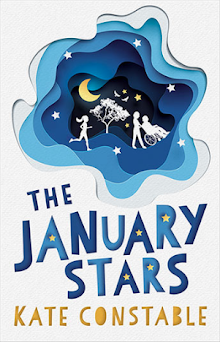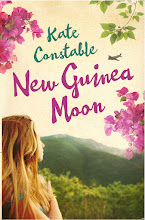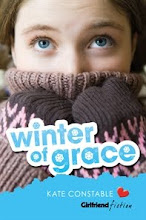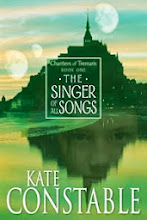Wow, I have been reading r-e-a-l-l-y s-l-o-w-l-y lately, ploughing my way through a couple of books that are either extremely dense and demanding (Marilynne Robinson) or best consumed in small bites (Taste). But more of those books later (when I actually finish them!). Who would have thought that the book with the dullest title of the three, The Art of Psychotherapy: Case Studies from the Family Therapy Networker, would turn out to be my 'fun read'?
The Family Therapy Networker is a magazine for mental health workers, and the case studies presented in this collection began life in its pages. Each case is described by the therapist concerned, together with their choice of treatment and how the therapy turned out. This is then followed by a commentary from another one or two therapists, who might agree with the approach taken, or vehemently disagree. Sometimes the original therapist then responds with justifications or extra information.
It all sounds pretty dry, but it's absolutely fascinating! I've always been a sucker for those collections of case studies, more literary than this, by author/practitioners like Oliver Sacks or Irvin D. Yalom. This material is less polished, but comes direct from the coalface of the therapist's consulting room. Mistakes are admitted, not all cases are successfully resolved, sometimes huge issues are left completely unaddressed (eg the role of gender in reinforcing a wife and daughter's 'caring' for an alcoholic husband; the possibility that a young boy who 'acts out' being a girl may actually be trans). Published in 1999, it was clear that social norms have shifted dramatically in some areas in the last twenty years, and were in the process of shifting on these pages. Some new and apparently exciting therapy techniques (EMDR, Thought Field Therpay) have now been debunked.
But what remains constant is the complex, intriguing, troubling field of relationships and mental health -- however they are tackled, those problems will always be with us. It's sobering, but also weirdly comforting, to learn that there is no one 'solution' to any client's difficulties; but that sometimes, it doesn't really matter what the therapist does, as long as they do something.
26.9.18
16.9.18
The Golden Age
How time flies! I remember that Joan London's slim novel, The Golden Age, made all the best-of-the-year lists when it was published, which I vaguely thought was about a year ago? But now, it was way back in 2014.
I really enjoyed this novel. Short chapters, clear, vivid writing, poignant characters -- an easy read, but not a dumb one. Set in Perth in the mid-1950s, it centres on two young patients at a polio facility (the eponymous Golden Age, a pub in its former life), thoughtful Elsa and aspiring poet Frank, the son of Hungarian refugees. There's not a lot of plot, but the story meanders gently and tenderly between its characters, touching them lightly then moving on. My only quibble was the rather abrupt ending -- I wanted it to go on much longer, which is not something I often say these days!
I definitely want to read London's other novels now. This was beautiful. I've even lent it to my mum, who says she can't read books any more. I'll let you know how she goes with it.
I really enjoyed this novel. Short chapters, clear, vivid writing, poignant characters -- an easy read, but not a dumb one. Set in Perth in the mid-1950s, it centres on two young patients at a polio facility (the eponymous Golden Age, a pub in its former life), thoughtful Elsa and aspiring poet Frank, the son of Hungarian refugees. There's not a lot of plot, but the story meanders gently and tenderly between its characters, touching them lightly then moving on. My only quibble was the rather abrupt ending -- I wanted it to go on much longer, which is not something I often say these days!
I definitely want to read London's other novels now. This was beautiful. I've even lent it to my mum, who says she can't read books any more. I'll let you know how she goes with it.
11.9.18
The Stone Book Quartet
I have ordered Alan Garner's memoir, Where Shall We Run To? as a birthday present (unfortunately it's going to arrive a little late!). The Stone Book Quartet, the last remaining novel of Garner's I had yet to read, is the perfect preparation for it; this is Garner's most personal and autobiographical work. It consists of four very slender novellas -- almost short stories, really -- each centred on a single day in the life of a child of a different generation in Garner's family, with the last boy, William, growing up during WWII, a disguised version of Alan himself.
Though the quartet is so slim, as usual, Garner packs in a dense mass of material. There are no supernatural elements here, but a deep continuity of place and memory, where family stories and history intertwine. Mary's father shows her a secret, sacred place, deep inside the hill; her son, Joseph, a 'granny reardun' (I'm guessing illegitimate?) rejects his grandfather's stonecraft to apprentice himself as a smith; Joseph's son Robert gropes to find his own place in family tradition; and finally William shares his grandfather's last day as a blacksmith and inherits a craft of a different kind. Characters from different generations and neighbouring families shift in and out of focus, and objects vanish and reappear.
This is a book to treasure, a book that apparently came relatively easily to Garner, and it sings.
Though the quartet is so slim, as usual, Garner packs in a dense mass of material. There are no supernatural elements here, but a deep continuity of place and memory, where family stories and history intertwine. Mary's father shows her a secret, sacred place, deep inside the hill; her son, Joseph, a 'granny reardun' (I'm guessing illegitimate?) rejects his grandfather's stonecraft to apprentice himself as a smith; Joseph's son Robert gropes to find his own place in family tradition; and finally William shares his grandfather's last day as a blacksmith and inherits a craft of a different kind. Characters from different generations and neighbouring families shift in and out of focus, and objects vanish and reappear.
This is a book to treasure, a book that apparently came relatively easily to Garner, and it sings.
8.9.18
A Circling Star
I bought Mara Kay's A Circling Star because I'd seen so many loving remembrances of Kay's Masha books by people whose tastes I share. A Circling Star is not a Masha book, and I'm guessing it's one of Kay's lesser works. Like the Masha novels, this one is set in Imperial Russia (it took me ages to work out that it was in the 1850s). It tells the story of cheeky, impulsive Aniuta, who is sent to join the Imperial Theatre School (a real place!) to train for the Bolshoi Ballet. Students had their board and education fully paid for by the Emperor, and those who didn't make the grade as dancers were shunted into the drama course, or ended up as prop makers or scenery painters.
It wasn't until I'd nearly finished the book and was doing some idle googling that I discovered that some of the characters in the novel were actually real people, too! Anuita's love interest, the intense Liev Ivanov, who writes a ballet especially for her and whose heart she breaks, ended as a renowned choreographer (not as handsome in his Wikipedia photo as he is described in the book), responsible for The Nutcracker and parts of Swan Lake. Other teachers at the school, actors and dancers, also proved to be historical figures.
Published in 1973, A Circling Star felt much more old-fashioned. It was a comforting read, even though it was shot through with the usual rivalries and treachery common to ballet books, and the (to me) unusual setting lent it added interest. I think the Masha books would be better, though!
It wasn't until I'd nearly finished the book and was doing some idle googling that I discovered that some of the characters in the novel were actually real people, too! Anuita's love interest, the intense Liev Ivanov, who writes a ballet especially for her and whose heart she breaks, ended as a renowned choreographer (not as handsome in his Wikipedia photo as he is described in the book), responsible for The Nutcracker and parts of Swan Lake. Other teachers at the school, actors and dancers, also proved to be historical figures.
Published in 1973, A Circling Star felt much more old-fashioned. It was a comforting read, even though it was shot through with the usual rivalries and treachery common to ballet books, and the (to me) unusual setting lent it added interest. I think the Masha books would be better, though!
7.9.18
Busman's Honeymoon
A detective story with romantic interruptions, or a romance with detective interludes? Busman's Honeymoon is the final volume of the adventures of Lord Peter Wimsey and Harriet Vane, and sees the couple married at last. The usual rule is that URST should never be resolved, but I think this novel provides a satisfying conclusion to Peter and Harriet's difficult courtship, because it shows that married bliss may not necessarily be smooth sailing and happy ever after.
Lord Peter has come a long way from the original 'silly ass' dilettante of Whose Body? In fact, the heart of Busman's Honeymoon, despite its comic episodes and farcical interludes, concerns the psychological impact of Wimsey's 'meddling' and its very real consequences -- in this case, the murderer will hang. We know that Lord Peter was damaged by the War; now we learn how heavily the responsibility of life and death weighs upon him. It's almost more than he can bear... until Harriet gently reminds him that if not for his 'interference', she would have lost her own life.
The penultimate section, where Harriet tours the ancestral seat, including an encounter with the family ghost, tips into twee wish-fulfilment territory. But the real power and agony of the final vigil makes up for it.
Lord Peter has come a long way from the original 'silly ass' dilettante of Whose Body? In fact, the heart of Busman's Honeymoon, despite its comic episodes and farcical interludes, concerns the psychological impact of Wimsey's 'meddling' and its very real consequences -- in this case, the murderer will hang. We know that Lord Peter was damaged by the War; now we learn how heavily the responsibility of life and death weighs upon him. It's almost more than he can bear... until Harriet gently reminds him that if not for his 'interference', she would have lost her own life.
The penultimate section, where Harriet tours the ancestral seat, including an encounter with the family ghost, tips into twee wish-fulfilment territory. But the real power and agony of the final vigil makes up for it.
Subscribe to:
Posts (Atom)


















